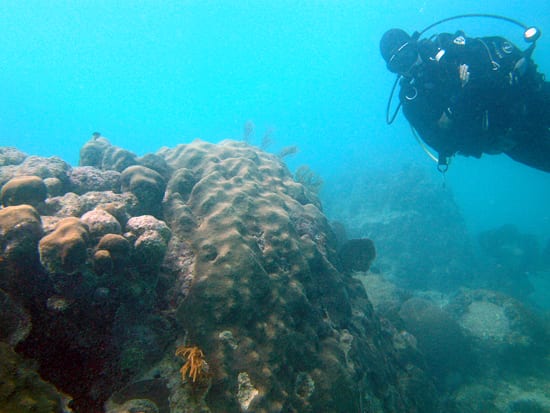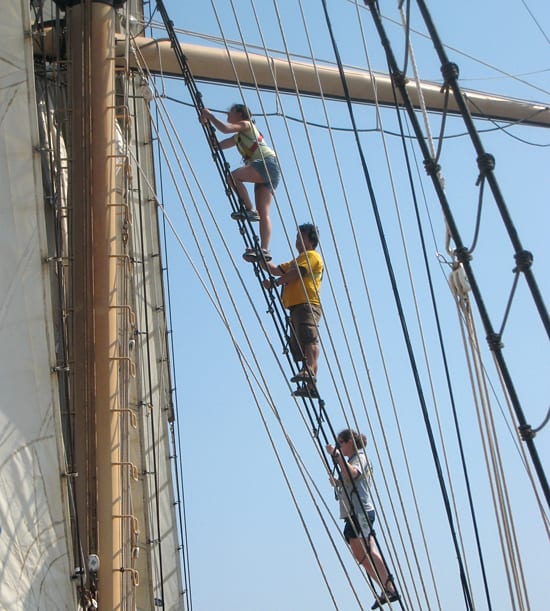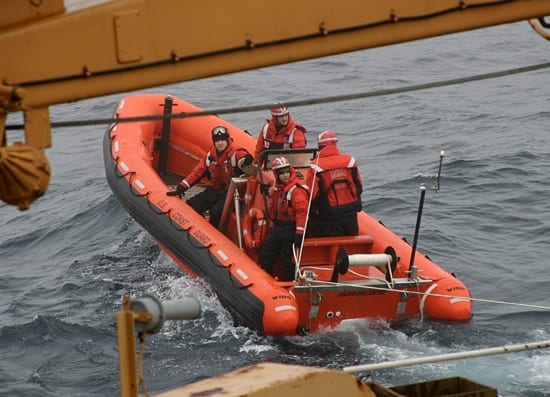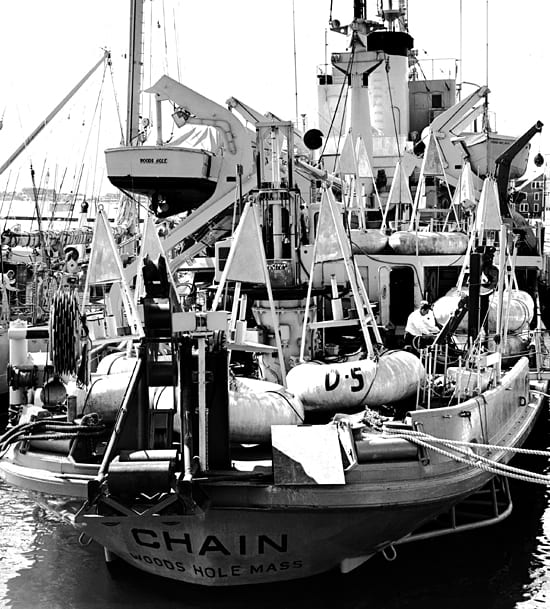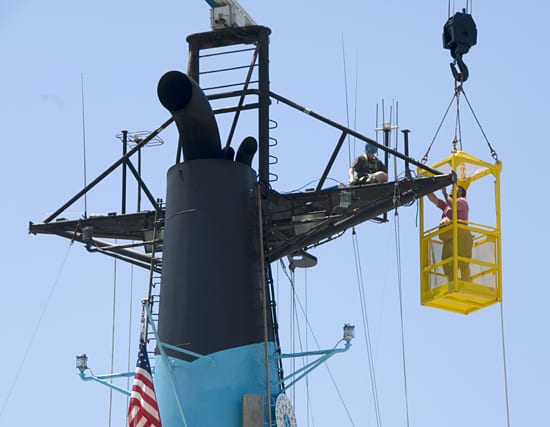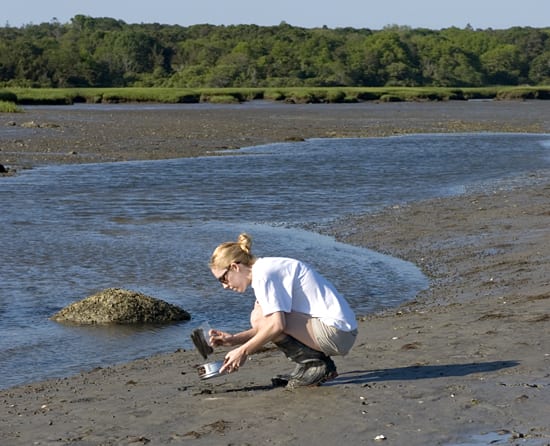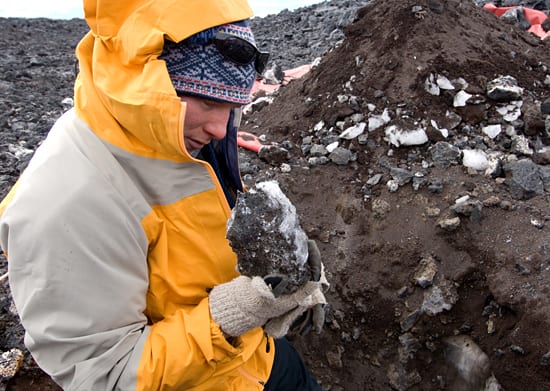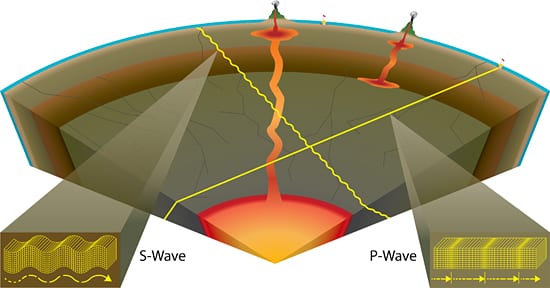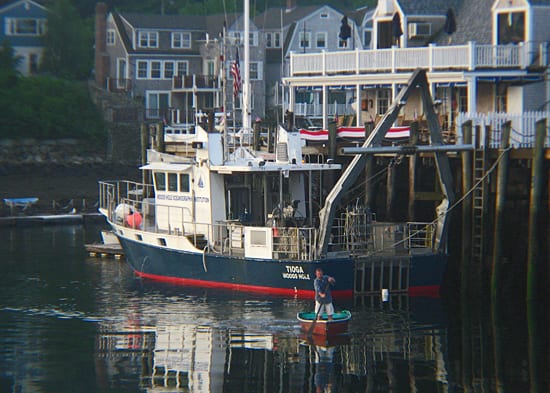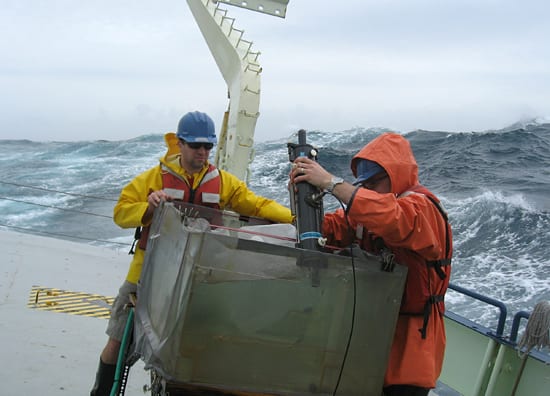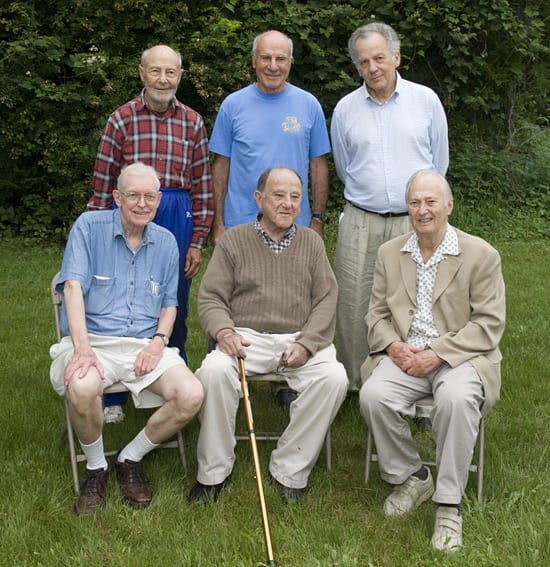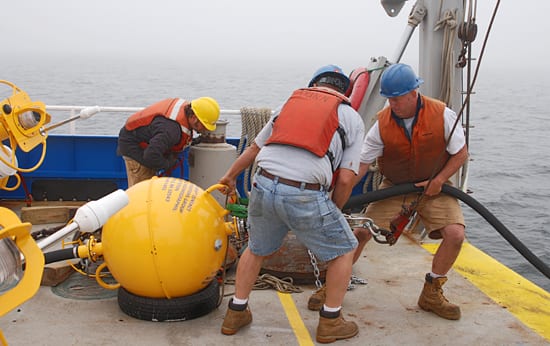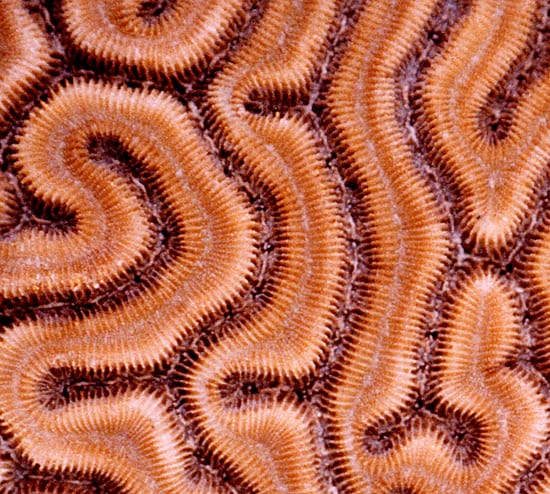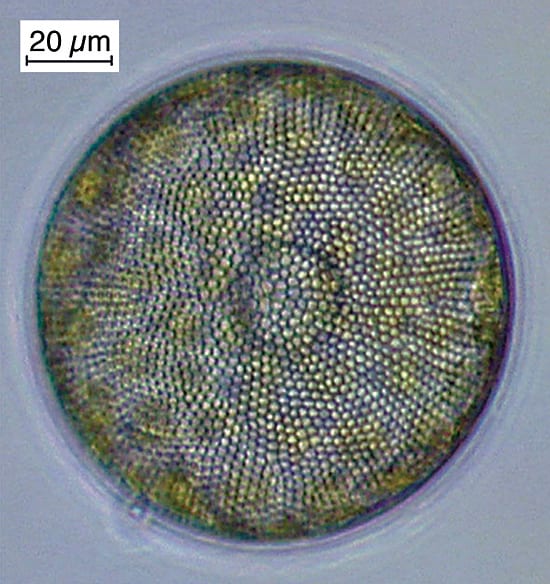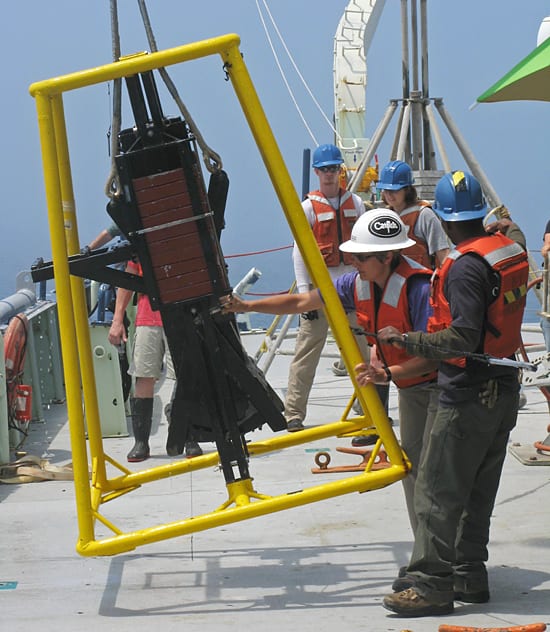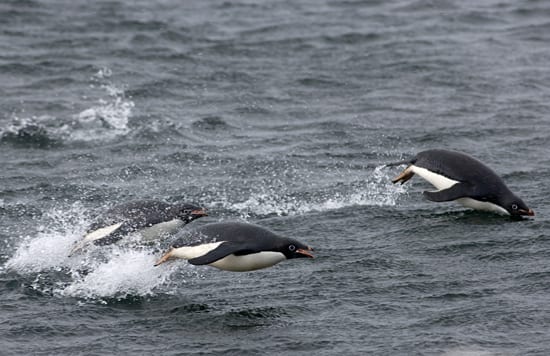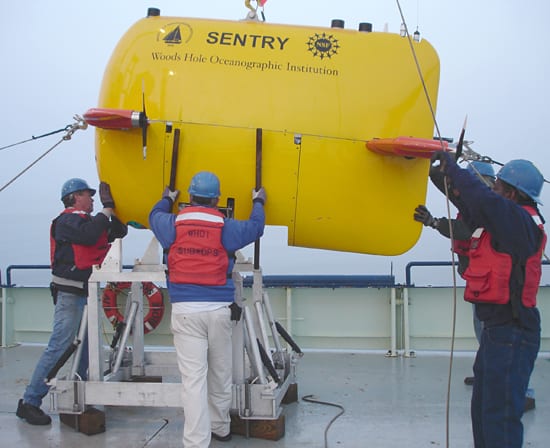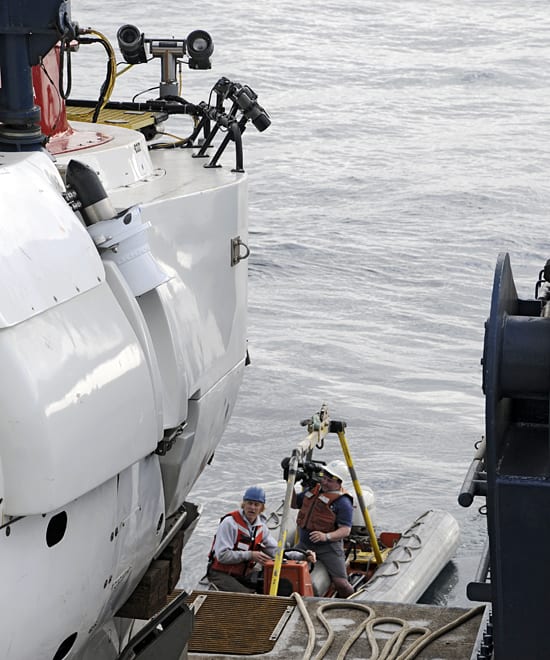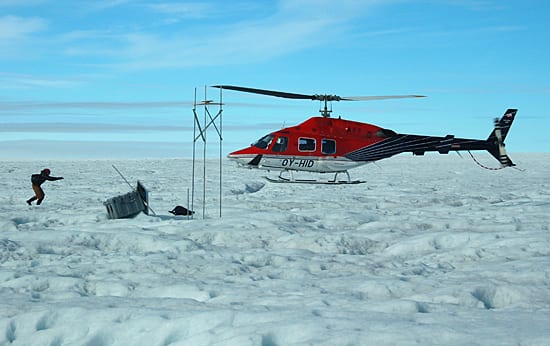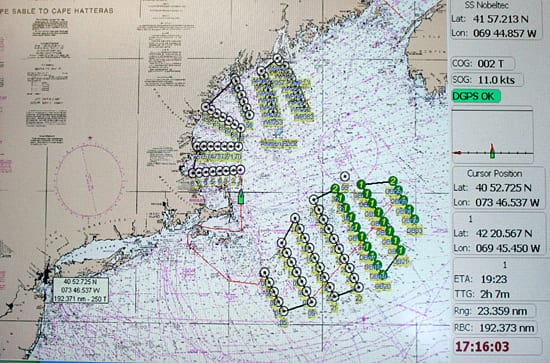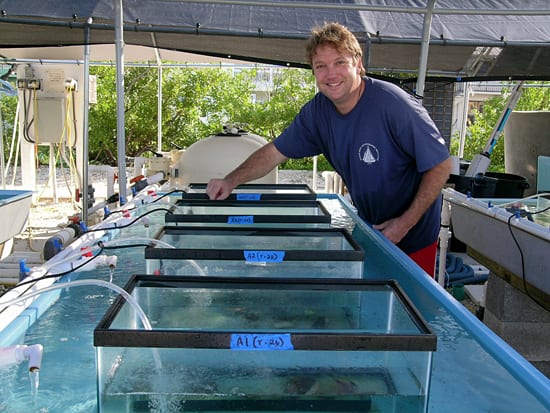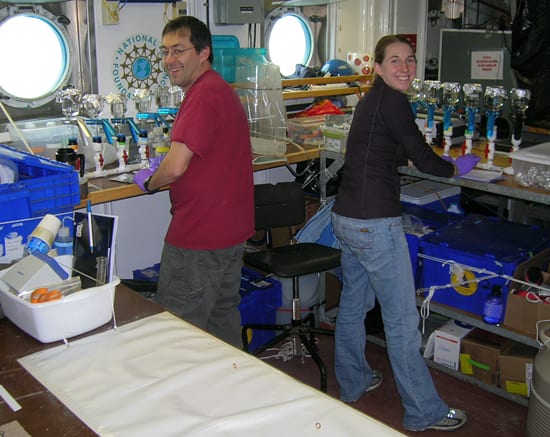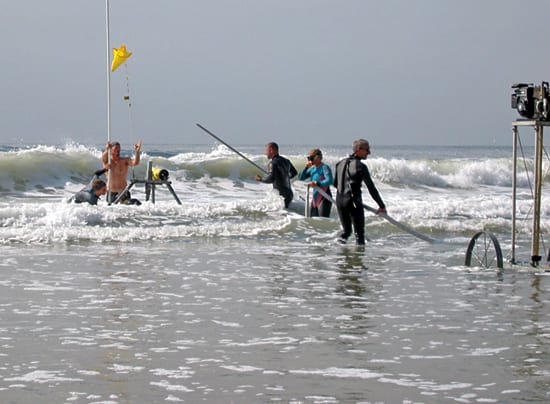Multimedia
Blue Water, Red Sea
Working off the coast of Saudi Arabia, a WHOI-led research team has been surveying and cataloging the largely unstudied coral reefs of the Red Sea. WHOI recently joined a partnership…
Read MoreNo, no, you go first…
New MIT/WHOI Joint Program students Heather Beem (top) and Jessica Fitzsimmons (bottom) climb the rigging of the educational sailing ship Corwith Cramer, with direction from ships’ mate (and sometime captain)…
Read MoreSign of the Zodiac
In March 2008, University of Rhode Island graduate student Pat Kelley (top, middle) and crew members from the U.S. Coast Guard icebreaker Healy use a Zodiac to recover a floating…
Read MoreChain of Tools
The fantail and decks of the research vessel Chain are stuffed with buoys while docked at the WHOI pier in 1958. Once a U.S. Navy salvage vessel, Chain made 129…
Read MoreAt the Top of Their Field
Mike Gagne (in the basket) and Nate Lavoie (on the mast) from WHOI’s ship operations group work to remove unused cable, mounts, and antennas from the top of the research…
Read MorePlaying in the Mud
MIT/WHOI Joint Program student Carly Strasser sieves mud to find juvenile softshell clams (Mya arenaria) in the summer of 2005 in an estuary in Calves Pasture, Barnstable, Mass. Strasser, now…
Read MoreFrozen Evidence
WHOI geologist Adam Soule holds a chunk of icy sediment plucked from the soils of Antarctica in December 2007. When Soule and colleagues dug a pit into the earth around…
Read MoreMaking Waves
When an earthquake occurs, rocks at a fault line slip or rupture, and a portion of Earth’s crust physically moves. That releases energy, and two types of seismic waves radiate…
Read MoreSwing Low, Sweet Chariot
The coastal research vessel Tioga takes shelter in late June at a dock in Rockport Harbor, Mass., where the tides can rise and fall by as much as eight feet.…
Read MoreJust Keep Breathing
Research assistant Justin Ossolinski (yellow) and assistant scientist Ben Van Mooy (orange) examine Niskin bottles stowed in an incubation tank on the stern of the research vessel Oceanus during an…
Read MoreDynamic!
Six of the seven founding members of the annual Geophysical Fluid Dynamics (GFD) summer program met in Woods Hole on June 27 for a 50th anniversary celebration. In addition, the…
Read MoreLooking Out for Whales
WHOI engineering assistants Jim Dunn (center) and Jim Ryder (right) and a member of the crew of the research vessel Connecticut deploy a right whale autodetection buoy in Massachusetts Bay…
Read MoreA-maze-ing Corals
The skeletons of brain corals are sensitive to changes in ocean conditions. As they grow, the corals assimilate chemical signals from the ocean that reveal changes in the global environment.…
Read MoreDisco Ball?
Viewed end-on, the diatom Coscinodiscus is a study in symmetry, reminiscent of a sunflower. WHOI biologists Dawn Moran and Becky Gast have been collecting, imaging, and cataloguing protists (protozoa and algae)…
Read MoreBox of Mud
Senior research assistant Ellen Roosen (white hard hat) puts a pin in a box corer in preparation for deployment over the side of the research vessel Oceanus in June 2008.…
Read MoreFlying In Water
To call a penguin flightless is to ignore its abilities underwater. As penguins evolved, their wings grew shorter and their feathers smaller, and they eventually lost the ability to fold…
Read MoreChoosing Only the Best
MIT/WHOI Joint Program students Paul Snelgrove and Noellette Conway examine the shallow-water clam, Mya arenaria; Conway focused her doctoral thesis on studies of clams in the late 1980s. The Joint…
Read MoreCome to Papa
The autonomous underwater vehicle (AUV) Sentry is recovered after a dive in the North Atlantic during an April 2008 test cruise on the research vessel Oceanus. From left: WHOI engineers…
Read MoreUp Close and Personal with Alvin
Craig Dickson, second mate for the research vessel Atlantis, and Matthew Barton, WHOI mulitimedia coordinator, drive in for a close up of the Alvin submersible in April 2008 during deployment operations…
Read MoreWait for me!
Glaciologist Ian Joughin hustles toward a chopper as it lands on top of the Greenland ice sheet in July 2007. Joughin and several colleagues from WHOI and the University of…
Read MoreConnecting the Dots
A computer screen capture shows a map of the sampling locations for the research crew sailing on the RV Oceanus in May and June 2008 to study harmful algal blooms…
Read MoreStress Test
WHOI marine chemist Konrad Hughen adjusts the temperatures on a set of aquarium heaters at the Mote Marine Laboratory in February 2007. The aquaria housed fragments of corals—species Montastrea faveolata—that…
Read MoreDouble Team
WHOI postdoctoral scholar Tim Shanahan and MIT/WHOI student Kim Popendorf—both from the Department of Marine Chemistry and Geochemistry—work to filter plankton from water samples in the main lab of the…
Read MoreSurfing for Data
WHOI coastal oceanographers Britt Raubenheimer (blue-purple wetsuit) and Steve Elgar (black suit at right) join colleagues from three institutions in setting up instrument tripods and cables in the surf zone…
Read More
